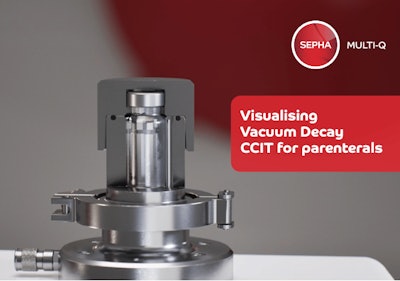
This content was written and submitted by the supplier. It has only been modified to comply with this publication’s space and style.
Sepha has released a new hyper-realistic animation video that demonstrates the principle of Vacuum Decay Container Closure Integrity Testing (CCIT) using the Sepha Multi-Q.
This short, informative video provides a clear visual representation of how vacuum decay testing works to detect leaks and defects in sterile pharmaceutical packaging, including vials, ampoules, and pre-filled syringes. Recognized as a non-destructive and deterministic CCIT method, vacuum decay testing complies with ASTM F2338-24 and has been widely accepted across the pharmaceutical industry.
A closer look at vacuum decay testing
The animation takes viewers through the key stages of the test cycle, offering packaging professionals and quality assurance teams a close-up view of how the Sepha Multi-Q operates. Developed for both laboratory and production environments, the Sepha Multi-Q is a compact solution that supports multiple packaging types. The system also works in combination with other testing methods, including pressure decay, making it a highly flexible option for manufacturers.
“Vacuum decay is one of the most reliable CCIT methods for identifying leaks in parenteral packaging, but it’s not always easy to explain,” says Claire Miskelly, Head of Sales. “This animation simplifies the process and provides the industry with a clear understanding of why vacuum decay is trusted and widely implemented.”
Visual introduction to CCIT
By releasing this latest video, Sepha reinforces its commitment to supporting pharmaceutical manufacturers as they seek effective quality control measures. The video is intended to help manufacturers better understand vacuum decay testing and the role the Sepha Multi-Q can play in ensuring packaging integrity.


























